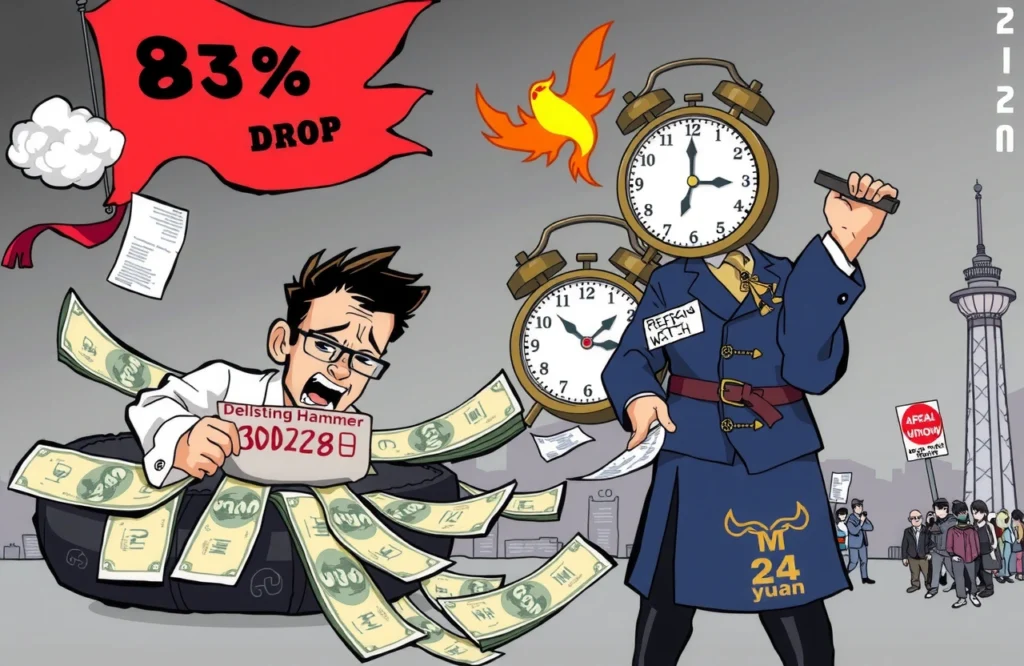Summary of Key Developments
- – Jensen Huang sold 75,000 Nvidia shares worth $12.94 million on July 18 amid record stock prices
- – The sale is part of a pre-arranged 10b5-1 trading plan filed in March to sell 6 million shares
- – Huang has sold nearly 1.3 million shares totaling $200 million since initiating the plan
- – Nvidia shares surged to new highs despite valuation warnings from Wall Street analysts
- – Upcoming earnings report in late August will test whether fundamentals justify current $4 trillion valuation
The Strategic Divestment
Over $12.94 million flowed back into Nvidia CEO Jensen Huang’s (黄仁勋) coffers on July 18 according to SEC filings, marking his largest single-day divestment in 2025. Transaction records reveal Huang sold 75,000 shares precisely as Nvidia stock reached unprecedented territory. This calculated divestment aligns with Huang’s pre-arranged trading plan established months earlier – a common practice among corporate executives.
The 10b5-1 Trading Blueprint
The structured trading mechanism Huang employed is governed by SEC’s 10b5-1 rule, permitting corporate insiders to establish predetermined selling schedules. These plans must be initiated during non-sensitive periods, providing legal insulation against potential insider trading allegations. Huang publicly filed his intention to divest up to 6 million shares back in March 2025, establishing clear parameters long before recent market developments unfolded.
Contextualizing Huang’s Divestment Activity
July’s $12.94 million transaction forms part of Huang’s accelerated liquidation pattern:
Cumulative Divestment Figures
– Year-to-date total: 130,000 shares liquidated valued at ~$200 million
– Previous week: $37 million sale via 225,000 share transaction
– Historical comparison: Huang’s 2024 prearranged trades yielded over $700 million proceeds
This measured divestment hasn’t visibly shaken market confidence. Nvidia shares surged 8.3% during the July trading week Huang executed these sales, underscoring robust institutional demand.
Nvidia’s Historic Market Performance
The backdrop to Huang’s stock sale represents an extraordinary capital markets narrative:
– $4 trillion market capitalization secured Nvidia’s position as most valuable listed company
– Shares increased more than fivefold since ChatGPT’s generative AI breakthrough
– Near-unbroken ascent fueled by accelerating GPU demand across data centers
Valuation Concerns Emerge
Despite undeniable momentum, skepticism brews on Wall Street. Nvidia’s forward P/E ratio has expanded dramatically from April’s ~20x multiple to 34x currently. BTIG Chief Market Technician Jonathan Krinsky voiced caution: “We’re seeing textbook overbought signals. Previous optimism borderlines euphoric. Risk management becomes paramount.” Historically insiders accelerating divestments often precede corrections – though Huang’s methodical implementation complicates interpretation.
Market Mechanics and Forward Outlook
Nvidia stock fundamentals navigated contradictory forces:
– Short interest reached $20 billion ahead of July expiration cycles
– Record $3 billion flowed into leveraged Nvidia call options during trade week
– Analyst price targets lifted consecutively throughout quarter
The Crucial Earnings Catalyst
All eyes now pivot toward Nvidia’s August earnings report. Consensus projects:
Q2 Fiscal 2026 Estimates
– Revenue: $155.6 billion (YoY growth +267%)
– Data Center revenue: $140.2 billion
– Adjusted EPS: $6.32/share
Failure to materially exceed these heightened expectations could trigger significant multiple compression given current stretched valuations.
Strategic Contextualization
Corporate executives routinely establish automatic liquidation programs for:
– Wealth diversification strategies
– Philanthropic funding mechanisms
– Estate planning requirements
– Tax optimization coordination
– Commercial opportunity funding
The measured pace of Huang’s sales under locked-in parameters suggests standard financial planning rather than strategic concerns. While valuation caution flags warrant investor attention, programmed divestment doesn’t equate to pessimistic signalling.
Industry Implications and Investor Pathways
The AI hardware ecosystem continues displaying asymmetrical rewards:
– Competitive upside: Broadcom and AMD tracking analogous growth trajectories
– Supply chain beneficiaries: TSMC’s advanced packaging capacity remains oversubscribed
– Emerging contenders: Custom silicon investments by Microsoft/Google improving competitiveness
Global CIOs should adopt balanced portfolio allocation toward multiple AI infrastructure layers including software platforms and semiconductor manufacturing.
Proactive Portfolio Recommendations
– Conduct fundamental valuation diagnostics using comparative metrics
– Establish update protocols around August earnings catalyst
– Recalibrate position sizing to reflect risk tolerance levels
– Monitor institutional ownership flows via Nasdaq and Bloomberg terminal data
Technology dominators continuously redefine frontier growth potential through scalable innovation pathways. Prudent participants maintain disciplined exposure protocols proportional to verified competitive advantages.




